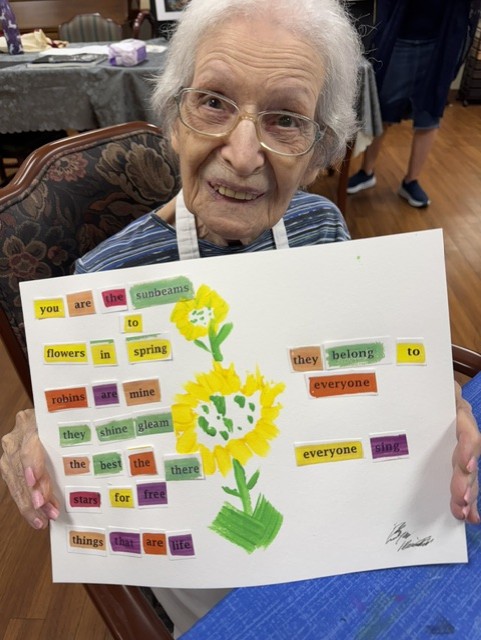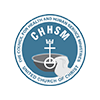I attended a workshop recently where the presenter shared his perspective about the life course which looked a lot like a hill with a very sharp, downward trajectory after the age of 65. The last, low-end point being death itself. This downward trajectory, they noted, was the last 1/3 of life. Although there were many points to the presentation with which I concur, I couldn’t get past that rapidly descending line of this singular chart of life.
Such a scenario is grounded in an understanding of aging that posits that we grow—in knowledge ability, intellect, and productivity—until we have lived about 65 years. The point of decline from that point on ends only with death itself after returning to a functional ability resembling infancy once again. And although there are some for whom this graph might represent their experience, it is usually because of a disease process and not just aging alone. This graph does not have to be predictive of what later life will be like for everyone.
This image of the downhill trajectory from our 60s onward helps to explain why one of the general narratives in our culture assumes that older adults are a drain on society. A consistent and sharp decline in later life suggests there is no value in our living longer. When in fact, this is far from the truth.
“A human being would certainly not grow to be 70 or 80 years old if this longevity had no meaning for the species to which we belong. The afternoon of human life must also have a significance of its own and cannot be merely a pitiful appendage to life’s meaning.” (Jung, Modern Man, p. 108)
Growth Charts
There is a body of research that shares a very different picture of later life. Instead of one chart plotting the hill, perhaps it is better to think in terms of multiple growth charts. These might include numerous lines each with its own arc on a symbolic graph depicting the human life span.
A line representing the physical aging process on our growth chart might be a more gradual line representing decline (which would actually begin prior to turning 60). We know that biologically there are numerous processes which do diminish with age. The decline of some of these processes can be slowed down through physical exercise, nutrition or with many other kinds of therapies. But note that physical aging is not something to be cured or overcome. We have been created to experience life in physical bodies that are finite.
Another line on the life course growth chart might represent creativity or imagination. This would hopefully be an upward pointing line until the point of death. If you don’t think creativity is present in later life, I suggest that you observe how people learn to adapt new behaviors and skills given those physical diminishments. I had to attempt a new way to get up off the ground while working in the garden yesterday—if anyone was observing me, I hope their most polite comment might have been “Well, that was creative!”.
And yes, there can be decline of cognitive function, but this line may not decrease rapidly or ever. For many, these might be more like gentle slopes with large periods of time holding level. And the point at which this line turns downward is going to be different for everyone with variances in the slope as well. Again, there are disease processes which will influence this line more significantly than just aging.
Growing
We use the word “grow” when we talk about the aging patterns in infancy and childhood. We continue to assume that all children grow into their 20’s—which is the reason why our educational system was set in the 1800’s for these first 2 decades of life when the average life expectancy was 48. Our growth in the first chapters of life is about health and ability—physically, mentally, intellectually, socially, spiritually. Separate lines on our growth charts could represent each of these areas.
Growth, regardless of age, has to do with increase in an understanding of the self and the world. It is about the growth of logic and imagination, expression and empathy, self-control and interpersonal connections and influence. Growth should be expected. And it needs to be seen as being very good.
Most would agree that we continue to grow and learn throughout adulthood. We learn and grow in our understanding how to be in relationships with partners, friends and our own children. We learn a new way of being in relationship with the generations who are older than ourselves. We learn and grow professionally as we engage with the larger communities and organizations around us. So why do we continually think only of decline and loss, retraction and burden after our mid-sixties?
Limitless
There is no age limit on our ability to experience life in its fullest. There is no point at which we stop learning things–unless we decide to do so. We are physical beings alive in the world. We continue to experience joy and frustration, delight and anger, awe and wonder and pain as we interact with others, as we participate in the world and as we continue to find ways to contribute to the well-being of creation. Our relationship with the divine, in whatever form or person this takes, doesn’t cease to offer the possibility for understanding deep knowing and mystery. All of these contribute to growth.
We need to give permission to ourselves and to others to continue to grow. If we expect that older individuals know all that they need to know, then that can become a self-fulfilling prophecy. Such a narrative can prevent older adults from growing further in their relationships with God and others. It can prevent them from gaining further perspective about themselves.
For many individuals who have had 6, 7, 8 or 9 decades of life experience, there comes the realization that there is still so much more to learn. To cease to grow could be seen as a sign that we have given up on living. There is no age limit for growth. Given the decades of experience that bring us to later life, there is so much material to reflect upon, to share, and to process which can lead us to ask new questions and to welcome new perspectives.
The cliché that you can’t teach an old dog new tricks is not true. Neither is the perspective that at any point in time anyone of us knows all there is to know. We can’t use this as a way to grant excused absences to stop growing.
May we give ourselves and each other permission to continue to develop new insights and knowledge. May we extend that permission to be an expectation that we all will grow in understanding more fully what is the breadth and depth of life’s meaning and how we can participate in the world around us.
For Reflection (either individually or with a group)
Read the blog. Read it a second time, maybe reading it aloud or asking someone else to read it aloud so you can hear it with different intonation and emphases. Then spend some time with the following questions with anything that helps you reflect more deeply. Take these questions for a walk in the woods or in your neighborhood, for a swim or a run or for a hot soak in the tub. Invite the questions to join you for tea or coffee.
- What have you not yet learned but it’s on your bucket list? What’s the next step to take to get closer to your goal?
- Where have you seen creativity and imagination in someone in their elderhood?
- With your age and experience, what do you know now that you would like younger generations to know? Have you shared this learning with family members?
Download a pdf including the Reflection Questions to share and discuss with friends, family, or members of your faith community small group.
6/29/23 14:00
View all articles by:






















